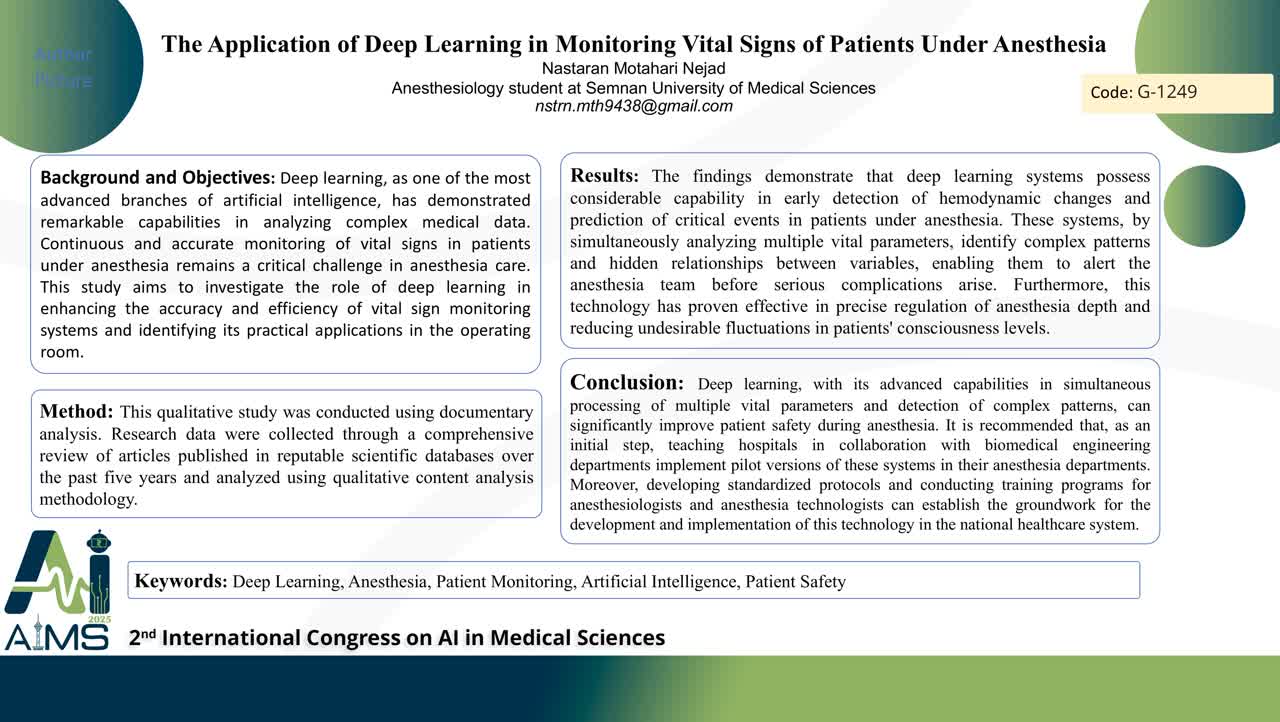The Application of Deep Learning in Monitoring Vital Signs of Patients Under Anesthesia
Code: G-1249
Authors: Nastaran Motaharinejad * ℗
Schedule: Not Scheduled!
Tag: Clinical Decision Support System
Download: Download Poster
Abstract:
Abstract
Background and Objectives: Deep learning, as one of the most advanced branches of artificial intelligence, has demonstrated remarkable capabilities in analyzing complex medical data. Continuous and accurate monitoring of vital signs in patients under anesthesia remains a critical challenge in anesthesia care. This study aims to investigate the role of deep learning in enhancing the accuracy and efficiency of vital sign monitoring systems and identifying its practical applications in the operating room. Method: This qualitative study was conducted using documentary analysis. Research data were collected through a comprehensive review of articles published in reputable scientific databases over the past five years and analyzed using qualitative content analysis methodology. Results: The findings demonstrate that deep learning systems possess considerable capability in early detection of hemodynamic changes and prediction of critical events in patients under anesthesia. These systems, by simultaneously analyzing multiple vital parameters, identify complex patterns and hidden relationships between variables, enabling them to alert the anesthesia team before serious complications arise. Furthermore, this technology has proven effective in precise regulation of anesthesia depth and reducing undesirable fluctuations in patients' consciousness levels. Conclusion: Deep learning, with its advanced capabilities in simultaneous processing of multiple vital parameters and detection of complex patterns, can significantly improve patient safety during anesthesia. It is recommended that, as an initial step, teaching hospitals in collaboration with biomedical engineering departments implement pilot versions of these systems in their anesthesia departments. Moreover, developing standardized protocols and conducting training programs for anesthesiologists and anesthesia technologists can establish the groundwork for the development and implementation of this technology in the national healthcare system.
Keywords
Deep Learning, Patient Monitoring, Artificial Intelligence
